Let’s take a trip back to 2012. It’s springtime in central New York at my college game store, The Bearded Dragon. We’re fresh off the Avacyn Restored prerelease; I overhear two players trading a Lion’s Eye Diamond for a box of the new set. In the back of the store, some players are talking about splitting a case, since the hype for Temporal Mastery is at an all-time high. People complain about the way that Miracle cards look, and no one can figure out a good way to represent Soulbond on board. Griselbrand is about to enter Legacy, and we are mere months away from The Bonfire Heard ‘Round the World. Despite all the hubbub, one card quietly entered the world: Primal Surge.
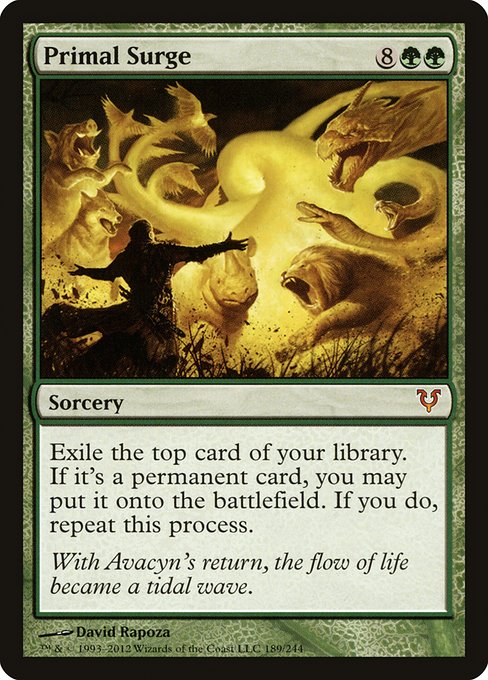
Primal Surge is your classic case of a big, stupid mythic never destined for competitive play. It’s the kind of card meant to be picked last in a draft, even after cards like Haunted Guardian and Seraph Sanctuary. That’s okay, because Primal Surge is meant for the dreamer in all of us. Today’s article is all about dreaming big. We’ll talk about one of my favorite Commander decks: The Mimeoplasm Primal Surge Combo.
The Foundation
The goal of this deck is simple: cast Primal Surge, put your entire deck onto the battlefield, and win on the spot. Now that we have that out of the way, there are plenty of nuances to go over.
For starters, this deck needs to be exclusively permanents. Running any instants or sorceries means that we can’t guarantee a win with Primal Surge. For ten mana, we should be winning the game. Flipping four cards off the top, only to stop when you see Krosan Grip, is simply not the way to go.
There are a bunch of different directions the deck can take, limited only by your creativity. In my opinion, a creature toolbox deck is the best shell for Primal Surge. By that, I mean a deck that uses creatures to accomplish a variety of tasks, ranging from removal and card draw to graveyard hate. They have tools to search their deck for relevant creatures and respond to ever-changing game states. Common commanders are Prime Speaker Vannifar, Karador, Ghost Chieftain, and Meren of Clan Nel Toth. A particular aspect of these decks is that they like to use the graveyard as a sort of second hand. So, by having ways to quickly grow the graveyard, we can dig to Primal Surge faster than normal.
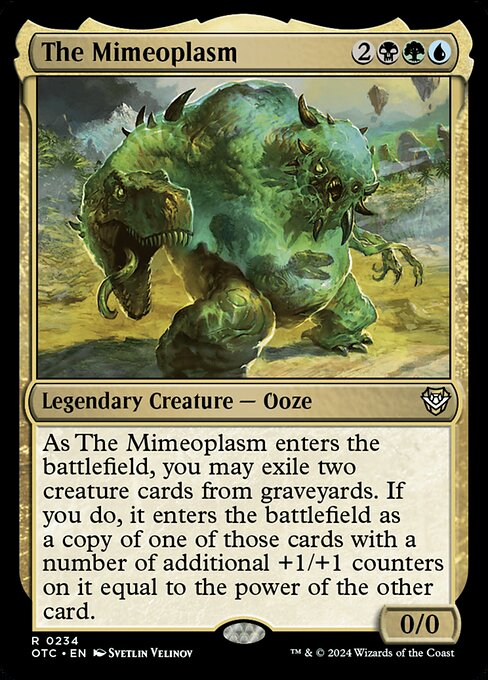
While I could have easily built around Muldrotha, the Gravetide or Yarok, the Desecrated, I wanted the unique challenge that The Mimeoplasm brings. This challenge, in part, comes from the fact that The Mimeoplasm is a decidedly Second Era commander. In my prior article, I discussed what makes up these different eras of legendary creature design. Muldrotha and Yarok are unquestionably more powerful, since they’re the product of the Third Era. But I wanted a commander that wasn’t as much “plug and play” right out of the box. It doesn’t quite spell out the blueprint to success, and I love that in a deck. The Mimeoplasm’s ETB effect also offers some targeted graveyard hate, allowing me to break up recursion loops that are popular right now.
The Gooey Guts of The Mimeoplasm
While my editing process is always changing, here’s the list as it stands today.
Graveyard Enablers: The deck needs to fill the graveyard. We have a generous suite of graveyard-enablers, led by cards like Underrealm Lich and Stitcher’s Supplier. The more creatures we can get into the bin, the more options that The Mimeoplasm has to transform into. This will also turn on other cards, like Golgari Findbroker and Tilling Treefolk. A unique challenge is that we have to pick carefully over what cards we want in our hand, versus those we want in the bin for our commander to copy. After one target from The Mimeoplasm, it gets exiled for good. So, we have to play carefully.
Another challenge is that some graveyard enablers can cause us to mill cards that otherwise we want in our hands. For instance, I’ve had games where I accidentally mill Primal Surge, and I cautiously look around the rest of the table. Sometimes, my opponents’ eyes go wide when they realize what I’m doing. Other times, it goes unnoticed. Granted, it’s always a good thing to be honest with your opponents when this kind of stuff happens. No one wants to play against someone who will try to visually hide their secret tech in the graveyard.
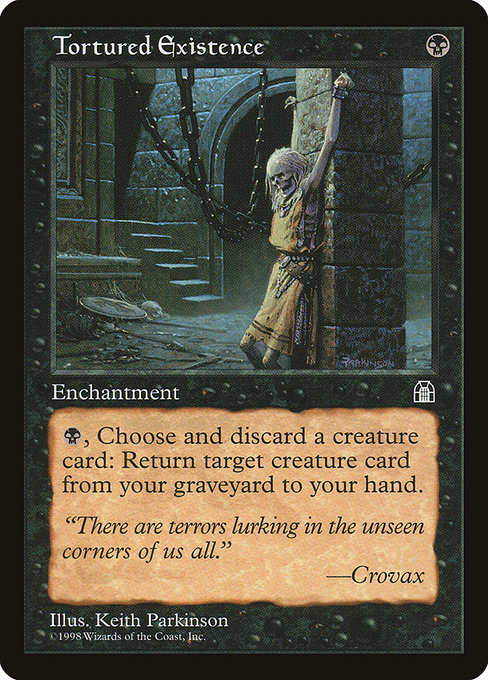
Engines: Like I stated before, creature toolbox decks have a ton of different engines to choose from. I pack two of my all-time favorites: Birthing Pod and Tortured Existence. Most folks are familiar with Pod, which offers plenty of combo potential—the likes of which got it banned in Modern. “Tortex” is an old favorite for Pauper players. It allows us to swap the best creature in the bin for the worst one in our hand. Or if we’re casting The Mimeoplasm, we can do the opposite. If you’re particularly devious, you can keep looping Spore Frog to shut down creature combat decks.
Removal: These days, it’s really easy to find removal that’s tacked onto a creature. In my list, you’ll recognize a slew of common tools, like Ravenous Chupacabra and Acidic Slime. However, I’ve made an effort to have more removal that requires sacrificing the creature. For instance, picking Thrashing Brontodon instead of Reclamation Sage. This allows us to get a creature into the bin, and in the range of our graveyard engines. It’s easier to loop Caustic Caterpillar through Tortured Existence, than it is to try and find a sacrifice outlet for Reclamation Sage. Also, it allows us to walk a creature out early in the slower turns, and keep it as a bargaining tool for other players. Since this deck is played mostly at sorcery-speed, sometimes we need to put our answers out before they have things to remove.
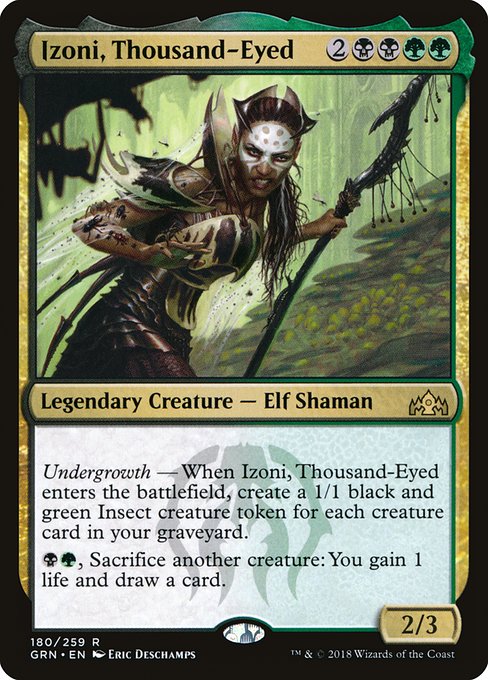
Card Draw: Card draw isn’t hard to find in a creature toolbox deck, but it’s tricky when playing with Primal Surge. Bazaar Trademage might seem like an easy include here, but if your entire deck entered the battlefield in one turn, you may end up losing to the ETB effect. Because of this, I steer away from cards like Mulldrifter and Disciple of Bolas. Instead, I look to those that offer safer avenues, such as Beast Whisperer, or Izoni, Thousand-Eyed. Since I could use more cards in this department, I’m going to look towards options like Lifecrafter’s Bestiary and Greed.
Board Wipes: Creature-based board wipes vary based on color, so my options are a bit limited here. However, Massacre Girl and Massacre Wurm are good, repeatable options for clearing the board of creatures. This is an area in which my deck is a little thin right now, so I’ll likely add a Bane of Progress as time goes on. It’s worth remembering that this is a combo deck that doesn’t really care about clogged board states, or pillowfort decks that hide behind a bunch of enchantments. So, there’s less of a need to run board wipes, when compared to decks that need to attack to win.
Living the Dream, or Surviving the Nightmare
In the two years I’ve had this deck, I’ve never lost after resolving Primal Surge, but there are still ways in which players can thwart the plan at the last second. They can cast something like Containment Priest in response, or Angel’s Grace after you’ve put your whole deck into play. But if they admit that they’re going to concede, most will ask for you to explain the combo anyway.
There are a bunch of different game-winning interactions that can happen, so I’ll explain a few:
Primal Surge puts the entire library into play, and then we stack triggers from our things entering the battlefield. Most of them can be shortcutted, but I make sure to announce that Massacre Girl’s trigger comes after Craterhoof Behemoth. Massacre Girl is going to shrink every creature on the board, so we want to make sure that ours are pumped up beforehand. Hoof will give our creatures upwards of +40/+40, which should make them too big to die to Massacre Girl. Mogis’s Marauder gives everyone haste, so they can attack for an exceedingly large amount. That’s the easy way to explain it, so that everyone can shuffle up and get another game in.
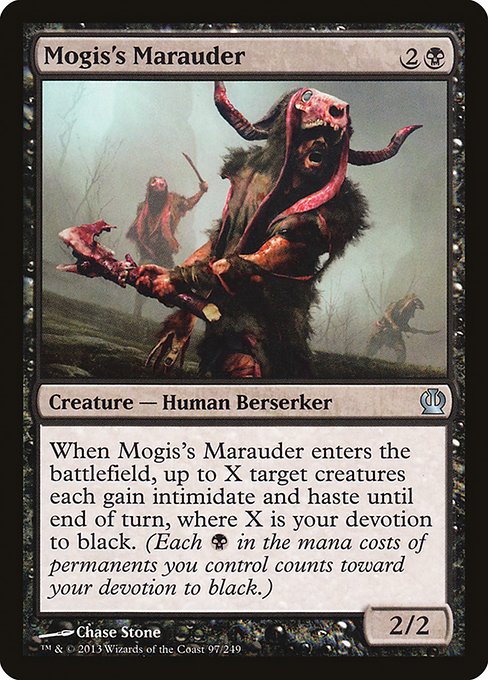
In case someone has something for after Primal Surge, we have to be prepared to respond. Let’s dive a little deeper.
There might be instant speed responses to our triggers, such as Cyclonic Rift. A player might also cast Brainstorm to get us to lose to our own Notion Thief. But don’t fret, because we can still get through these sorts of things. We respond to them by giving our creatures Persist with Cauldron of Souls, and then sacrifice everything through Dimir House Guard. Blood Artist sees all of those deaths, twice, and that can get us there.
If someone is at infinite life, then we flicker Peregrine Drake and Deadeye Navigator an arbitrarily-large amount of times, generating infinite colored mana through Golgari Rot Farm, Dimir Aqueduct, and Simic Growth Chamber. We then set up a loop where we sacrifice Vampire Hexmage, targeting anything, and drain life through Blood Artist. We then pair Deadeye Navigator with Eternal Witness, allowing us to use the infinite mana to flicker “E-Wit” every time Hexmage hits the bin, allowing us to recast Hexmage, and loop indefinitely.
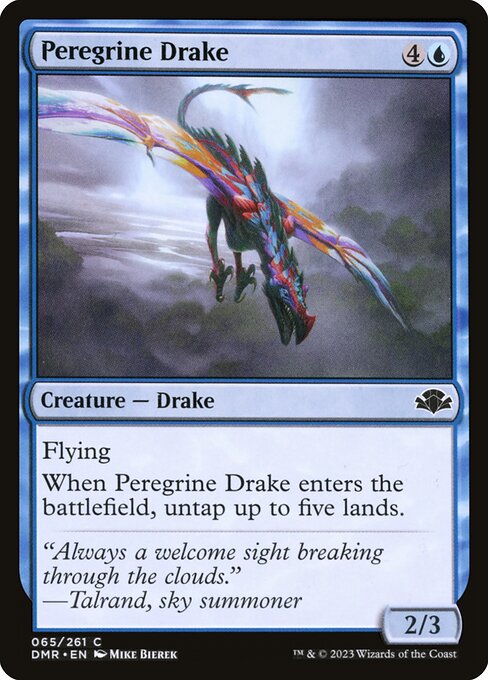
There’s always potential that our opponents have a true silver bullet for our combo turn. Cards like Hushbringer and Angel of Jubilation can throw a wrench in the gears, since we rely on ETB triggers and sacrifice effects to win. If you think these might be relevant in your metagame, pack Thassa’s Oracle, Laboratory Maniac, or Jace, Wielder of Mysteries. Personally I don’t run them, because I enjoy the puzzle of finding a narrower path to victory.
If someone casts Angel’s Grace or Teferi’s Protection, then we still have options. For this, we have Feldon’s Cane and Perpetual Timepiece to rebuild the library. We just need to kill off our Collector Ouphe before activating them. We follow that by sacrificing Evolving Wilds and Terramorphic Expanse. After activating either artifact, we get those cards as our new library. It’s like a “Build-Your-Own Doomsday”, but all of our leftover cards are bad. Winning will have to wait, and it’s time to hang on like a cat does to living room curtains.
Admittedly, I don’t typically use those artifacts to rebuild. Instead, I use them to reload my library before the Primal Surge turn. That setup can make all the difference, because I sometimes see combo pieces in the bin, instead of hiding somewhere in the deck. They load the cannon, and the deck dons a helmet and cape before launching onto the battlefield. After all, it’s much more fun to put it all on the line.
Finally, Peregrine Drake and Deadeye Navigator are built in to be a backup combo. If you can get both of them and feed the infinite mana through Duskwatch Recruiter, you can play out every creature in your deck. Granted, make sure you cast Beast Whisperer last, so you don’t end up decking yourself.
Shelf Life
This deck feels different each time you play it, depending on whether or not your opponents know what to expect. In my experience, people usually don’t notice that you’ve been casting only permanents. It’s easy to make it look like you’re having a below-average game, and are saving your removal spells for more important things. This facade gets more believable if you play cards like Vedalken Orrery, Leyline of Anticipation, and Alchemist’s Refuge. As a disclaimer, though, it can feel slow to play if you’re only going at sorcery speed. You might feel less engaged at the table, compared to other decks. For those reasons, I added cards like Mystic Snake and Frilled Mystic, giving me some instant-speed interaction.
If you rely on reaching for Primal Surge every time, then the play pattern could get boring and linear. For that, I recommend challenging yourself with finding a new path to victory. I used to run Hermit Druid in this deck, but with about six basics. This allowed for arguably the most fair usage of Hermit Druid in Magic’s history. Regardless, it allowed me to play a grindy, slower game plan, instead of just racing to Primal Surge.
All in all, this deck is an absolute blast to pilot. It offers tons of flexibility in the game plan, as well as shiny new tools each year. It’s not married to a particular color outside of green, so you can try a bunch of different options. Few feelings are greater than fanning nearly all 100 cards out onto your playmat, announcing your victory. After all, you resolved a ten-mana sorcery from Avacyn Restored; you deserve this.
Travis is a Virginia-based player and writer, who has been turning things sideways since Starter 1999. He primarily plays Commander, Pauper, and Legacy, and has a passion for introducing new players to the game. When he isn’t making people pay the Thalia tax, he can be found mountain biking or playing the guitar. You can follow his exploits here on Twitter and Instagram.

